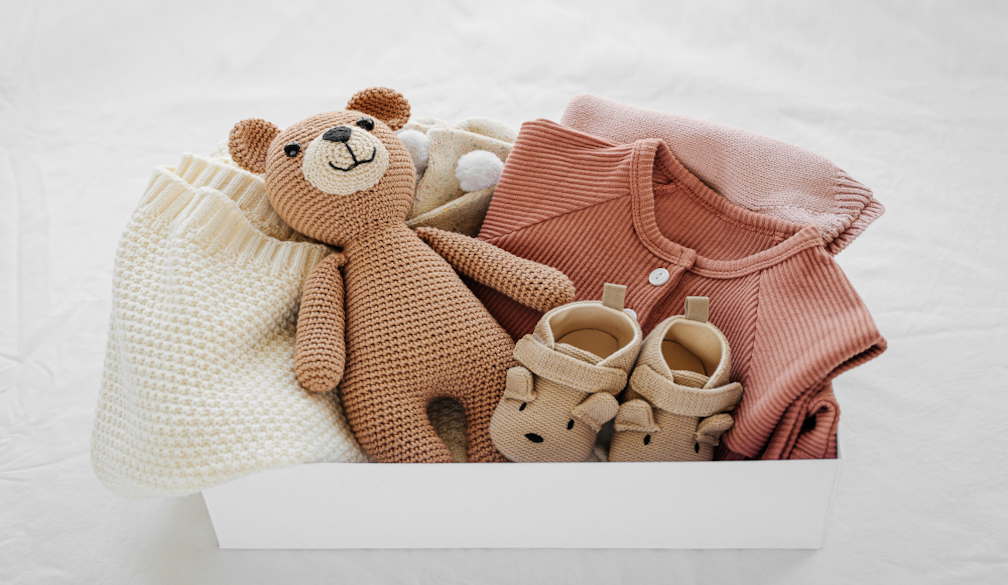A Guide to Baby Clothes for Newborns in Australia

Welcoming a newborn into your life is a momentous occasion filled with joy and excitement. As you prepare for your little one's arrival, one of the most important tasks on your to-do list is shopping for baby clothes.
In Australia, where the climate varies greatly from region to region, selecting the right clothing for your newborn is essential. This comprehensive guide will take you on a journey through the process of choosing baby clothes that are not only adorable but also practical and suitable for the Australian climate.
Consider the Season
Australia's climate can be quite diverse, from the hot and humid tropical regions in the north to the cooler temperatures in the south. It's essential to consider the season when shopping for baby clothes.
Summer (December to February):
For summer babies, the key is keeping your newborn cool and comfortable. Opt for lightweight and breathable fabrics like cotton. Onesies, rompers, and short-sleeved bodysuits are great choices. You may also want to invest in sunhats and sunglasses to protect your baby from the harsh sun.
Autumn (March to May) and Spring (September to November):
During these transitional seasons, the weather can be unpredictable. Layering is key. Dress your baby in long-sleeved onesies with cardigans, leggings, or light jackets. Make sure the fabrics are breathable but provide some warmth when needed. Don't forget to add a few lightweight blankets to your baby's crib for those cool evenings.
Winter (June to August):
Winter babies require extra warmth and snugness. To keep your little one toasty, invest in thicker, warmer fabrics like fleece, wool, or knitted materials. Footed sleepers and baby hats are great additions to their wardrobe. Additionally, consider a baby snowsuit if you're living in the cooler southern regions of Australia.
Easy Accessibility
Newborns require frequent diaper changes, and you'll want clothing that makes these changes as hassle-free as possible, especially when you are out and about at the shops, playgroups or baby sensory classes. Look for baby clothes with snap buttons, zippers, or easy-access designs.
These features will ensure that you can quickly change your baby without waking them up completely during the night, which can be a lifesaver for sleep-deprived parents.
Comfort and Softness
Newborn skin is delicate and sensitive, so it's crucial to choose baby clothes that are soft and gentle. Organic cotton is an excellent choice as it is both comfortable and hypoallergenic.
Avoid clothes with scratchy tags or rough seams that could irritate your baby's skin. Consider investing in clothing labelled "OEKO-TEX Standard 100" to ensure that it's free from harmful substances.
Sizing
Babies grow quickly, so when purchasing newborn baby clothes, consider buying a mix of sizes. While you'll need some "Newborn" sizes for the early days, it's a good idea to have some "0-3 months" and "3-6 months" clothing on hand.
This way, you're prepared as your baby grows. Keep in mind that sizes can vary between brands, so checking the specific brand's size guide can be helpful.
Cute and Practical Styles
Of course, you want your newborn to look adorable in their outfits. Consider various styles, including onesies, dresses, rompers, and sets with cute patterns and colours. Keep in mind that newborns tend to be messy, so having practical and easy-to-clean outfits is essential. Here are some popular styles to consider:
- Onesies or bodysuits: These are versatile and perfect for everyday wear.
- Rompers: Cute and comfortable, rompers are great for playtime and outings.
- Sleepers: For bedtime, opt for footed sleepers to keep your baby cozy and warm.
- Baby hats and mittens: Essential for protecting your baby's head and hands in various weather conditions.
- Socks or booties: Keep those tiny feet warm and protected.
- Swaddle blankets: Swaddling can provide comfort and a sense of security for newborns.
- Burp cloths: These are a must for keeping your baby and your shoulder clean during feeding.
Stock Up on Essentials
You'll need a range of newborn baby clothes to keep your newborn comfortable in various situations. Here's a detailed list of essentials to have on hand:
- Bodysuits or onesies: At least 6-8 pieces.
- Rompers or outfits: 4-6 pieces.
- Sleepers: 4-6 pieces.
- Baby hats and mittens: 2-4 pieces.
- Socks or booties: 4-6 pairs.
- Swaddle blankets: 2-3 pieces.
- Burp cloths: 6-8 pieces.
- Lightweight blankets: 2-3 pieces.
- Outerwear (jackets or snowsuits, depending on the season): 1-2 pieces.
- Baby pajamas: 2-3 sets.
- Special occasion outfits: 1-2 sets for events like birthdays or christenings.
Safety First
When shopping for baby clothes, ensure they are free from any small parts or accessories that could pose a choking hazard. Additionally, check for loose threads and secure stitching to prevent any accidents. Make sure any clothing with drawstrings or cords is avoided, as these can be dangerous to a curious baby.
Conclusion
Choosing baby clothes for newborns in Australia can be an exciting and rewarding experience. By considering the season, prioritising comfort, and focusing on practicality, you'll be well-prepared to dress your little one in style while keeping them safe and snug.
Enjoy this special time and cherish every adorable moment with your newborn. Whether you're experiencing a scorching summer or a chilly winter, your baby's wardrobe will be filled with cute, cozy, and practical outfits to suit the Australian climate.

























